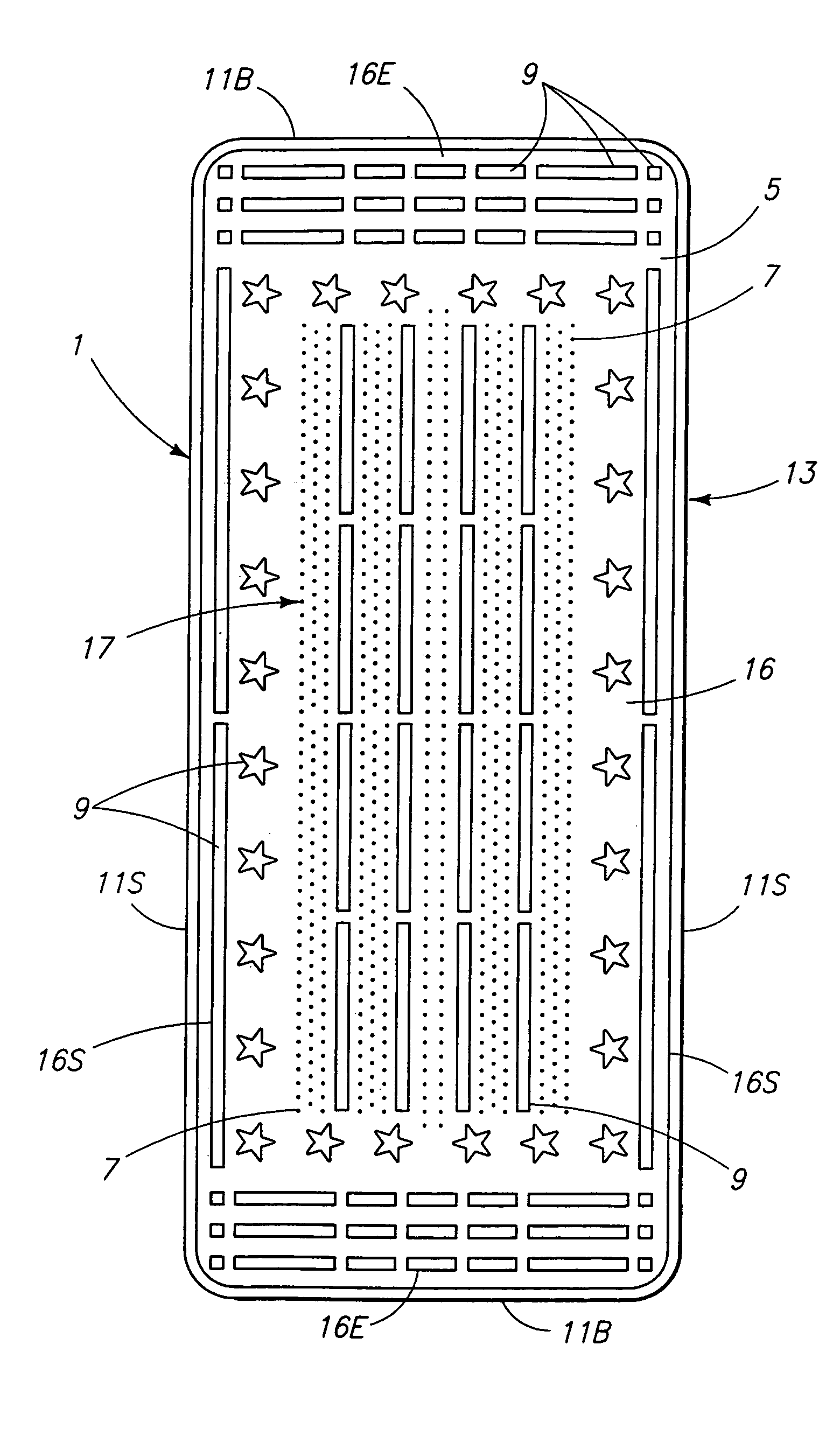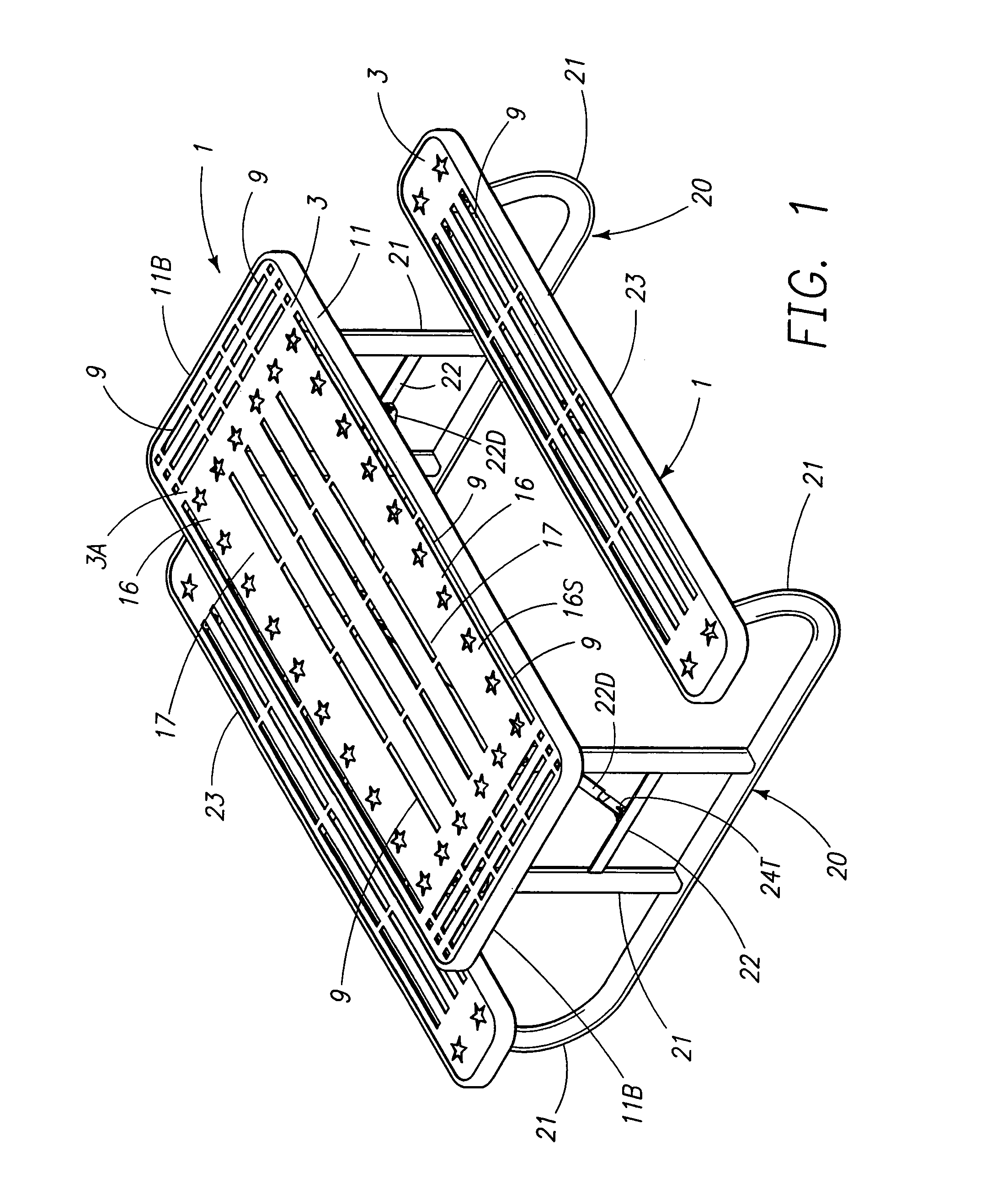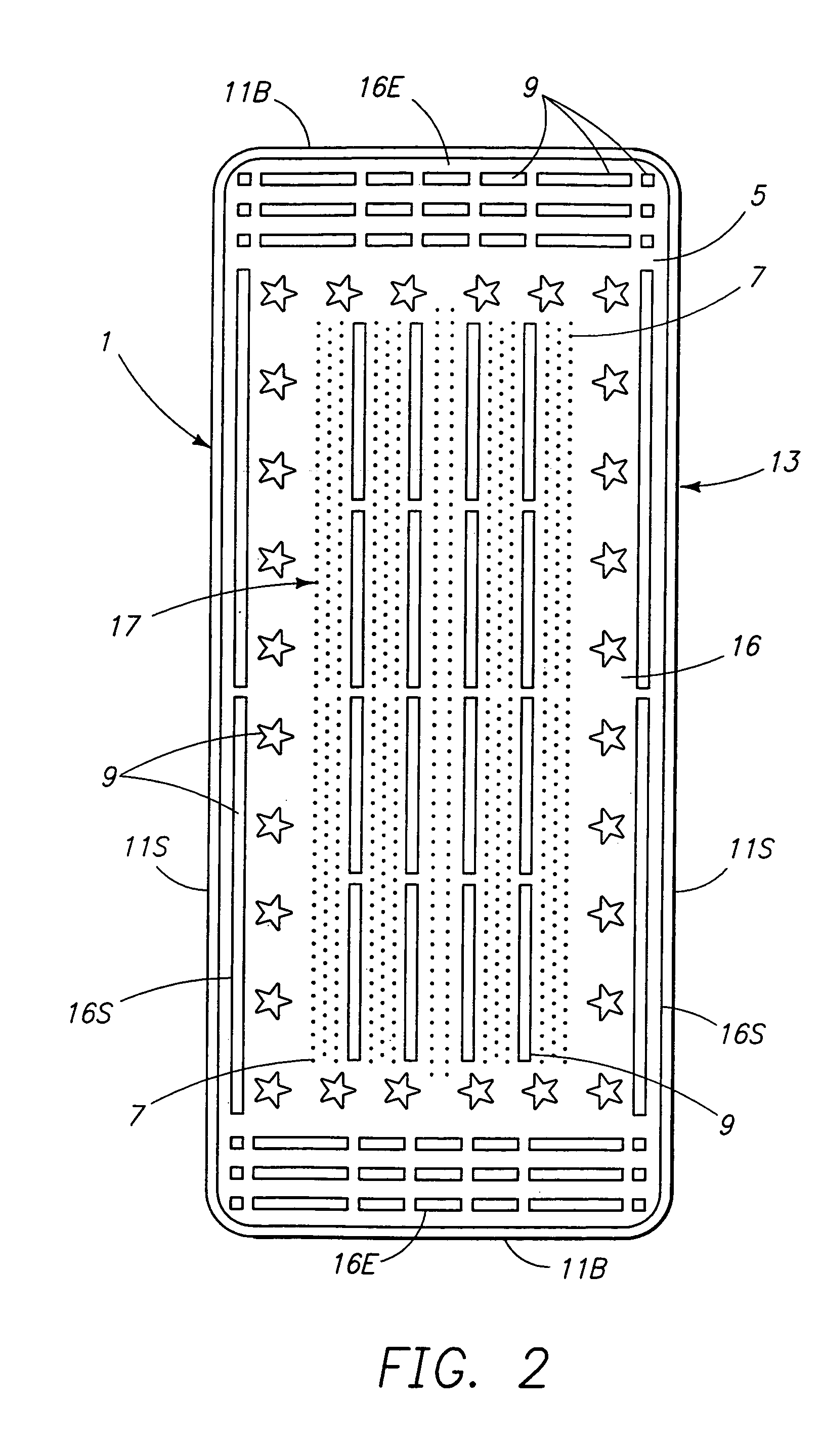Coated metallic articles
a technology of coating metal and metal articles, applied in the direction of coatings, pretreated surfaces, combination furniture, etc., can solve the problems of inability to produce a coating article having exceptional resistance to peeling, coating material to form a non-uniform coating on the non-expanded area of the substrate, and inapplicability of existing technology to uniformly coat unexpanded metal articles
- Summary
- Abstract
- Description
- Claims
- Application Information
AI Technical Summary
Benefits of technology
Problems solved by technology
Method used
Image
Examples
example 1
[0044]A coated article 1 in the form of a picnic table embodying the leveling apertures 9 and anchoring apertures 7 was made from standard metal stock components. The picnic table top assembly 13 was fabricated with an effective amount of anchoring apertures 7 and leveling apertures 9 so as to create a substantially smooth, uniform and continuous fused plasticized polyvinyl chloride coating 3 firmly bonded to uncoated solid portion 5 of the picnic top 13 and fused to itself. The depicted table top 13 of FIG. 1 contains a sufficient closed surface area so as to require the implementation of both the leveling apertures 9 and anchoring apertures 7 to firmly anchor and conjointly fuse the extended table top surface coatings 3A &3B together. The picnic table legs assembly 20 including the unshaped frame construction with extending bench seat leg section 21 and table top support legs 21 were made from a 2⅜ inch diameter tubular steel stock bent so as to provide support for the bench seats...
example 2
[0071]The table top 13 and bench seats 23 depicted by FIGS. 6-9 were then made pursuant to the manufacturing techniques as described in Example 1. The table top 13 measuring 14.7 square feet with rounded corners was made from 10 gauge coil steel equipped with a two inch OD Round 12 gauge steel tubing being welded to the center to create a canopy post mount 25. The outer bordering edge 11 of 2.375 inch width by 178.25 inches in length of 10 gauge coil steel stock was then welded onto the table top peripheral edge 11. The underside bracing shown as 14C and 14D were fabricated from a single piece using four identical flat stock pieces, each measuring 0.1875 inch thick×1.50 inch in width×38.625 inches in length, bent at a 135 degree obtuse angle so as to form one center support brace section 14C and one diagonal brace section 14D which when combined together form the underside bracing shown in FIG. 8. The length and 135 degree angular bend of the center support brace section 14C and dia...
PUM
| Property | Measurement | Unit |
|---|---|---|
| mean diameter | aaaaa | aaaaa |
| mean diameter | aaaaa | aaaaa |
| thickness | aaaaa | aaaaa |
Abstract
Description
Claims
Application Information
 Login to view more
Login to view more - R&D Engineer
- R&D Manager
- IP Professional
- Industry Leading Data Capabilities
- Powerful AI technology
- Patent DNA Extraction
Browse by: Latest US Patents, China's latest patents, Technical Efficacy Thesaurus, Application Domain, Technology Topic.
© 2024 PatSnap. All rights reserved.Legal|Privacy policy|Modern Slavery Act Transparency Statement|Sitemap



